Instruction
Stickney: Fixing the Spin Out
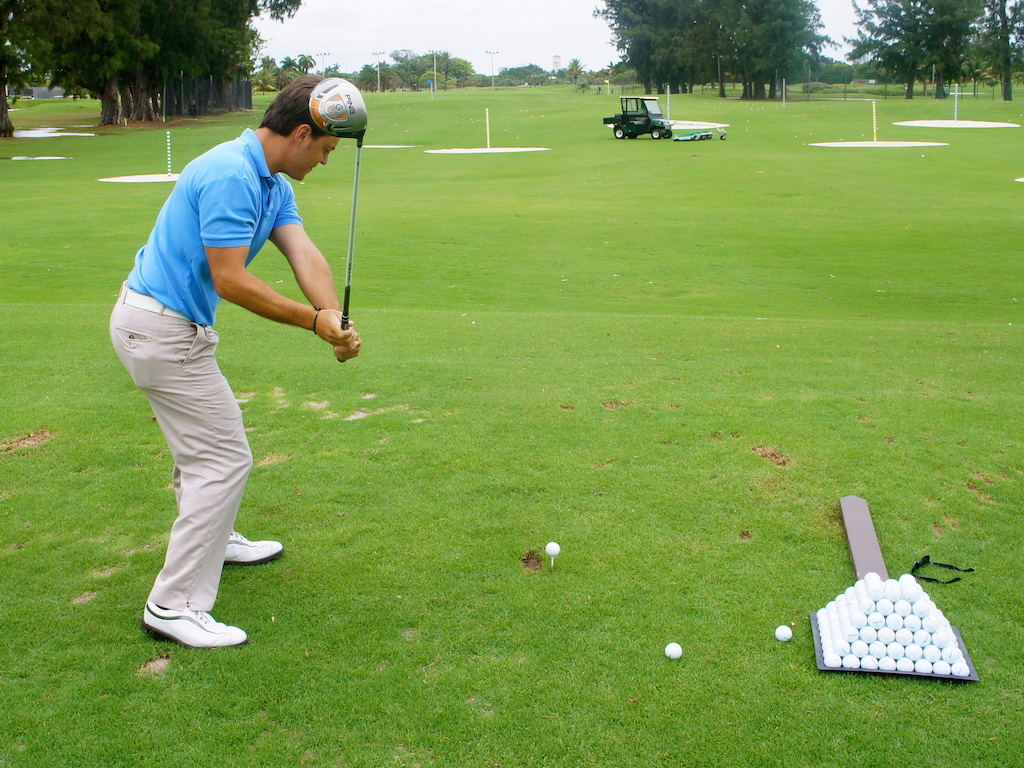
Over the years, we have seen a resurgence of the argument regarding the bumping or turning of the hips to begin the downswing; however, with the advent of force plates technologies such as BodiTrack and Swing Catalyst, we are finally able to understand more about what happens during the transition.
Over time, using these force plates with the same people helps teachers develop the best and most efficient way their students should move weight transitionally during the swing. Sadly, there is still a ton of poor information floating around regarding how the weight moves and the role it plays on the downswing transition.
As we know from studies, the weight tends to move into the right side during the backswing for most golfers. Because of this action on the backswing, weight has to return to the forward leg or “post” so golfers can control where they impact the ground. This action/reaction of moving weight around does much more than help golfers control their low point, or where the club “bottoms out,” however. It also sets up the downswing chain of events so golfers can hit the ball with effortless power and swing on the correct downswing plane.
What is happening for most golfers who struggle from the top of their backswing? They make some type of rotation into their rear foot, and their weight moves into their right side to some degree.
For the sake of this article, it is not important how much weight moves. From the position shown above, it is important for golfers to move back into their forward post. If not, they will spin-out too early and look like the golfer the photo below. This position can cause several things to occur.
- The low point can move rearward, resulting in weak shots that are rarely hit on the center of the face.
- The path can also shift too much leftward (or rightward, for a left-handed golfer), which creates a problem with face control.
As you can see from the yellow line above, this player didn’t return all his weight to his forward foot quick enough during his transition. For that reason, he is spinning over a spot that is behind his zipper. When the hips don’t bump enough toward “right field” (or left field for a lefty) before they begin spinning, it sets up a throw-out action of the right shoulder from the top shifting the path way to the left.
Above, you can see a down-the-line portion of a golfer’s swing. His hips spun in the transitional phase of the downswing, so his path (the blue line) was shifted -12.2 degrees from out-to-in. When golfers do this, they will also tend to hit down too much on the ball as well, and this is the reason why this golfer’s Angle of Attack (AoA) was -7.6 degrees — way too high for a seven-iron.
So what’s the best way to make sure you bump enough into right field during the transition?
- Put a stick a fist-distance off your left hip socket and practice bumping the stick as you hold your hands at the “top” position of your backswing. This will cause the rear shoulder to fall more downward, rather than outward, to begin the transition.
- From this point it is OK to rotate everything through and into impact pivoting, around your forward post.
This photo above is a great example of how to bump into your left toe during the transition. You can see that the golfer has bumped into the stick (the yellow line I drew), and his hips are pointed into right field. This helps the rear shoulder to move down and to the inside, a key to delivering the club to the ball on plane.
The photo above shows what the golfer would look like from the down-the-line view, and it’s a perfect inside path for this player.
Remember that you must bump your hips a touch before you start the downswing so you can move into and rotate around your forward post. It allows the right shoulder to lower the club down to the inside, and will help gain more consistency through the bag.
- LIKE202
- LEGIT22
- WOW13
- LOL3
- IDHT7
- FLOP5
- OB3
- SHANK29
Instruction
Clement: Laid-off or perfect fade? Across-the-line or perfect draw?

Some call the image on the left laid off, but if you are hitting a fade, this could be a perfect backswing for it! Same for across the line for a draw! Stop racking your brain with perceived mistakes and simply match backswing to shot shape!
- LIKE0
- LEGIT0
- WOW0
- LOL0
- IDHT0
- FLOP0
- OB0
- SHANK0
Instruction
The Wedge Guy: The easiest-to-learn golf basic

My golf learning began with this simple fact – if you don’t have a fundamentally sound hold on the golf club, it is practically impossible for your body to execute a fundamentally sound golf swing. I’m still a big believer that the golf swing is much easier to execute if you begin with the proper hold on the club.
As you might imagine, I come into contact with hundreds of golfers of all skill levels. And it is very rare to see a good player with a bad hold on the golf club. There are some exceptions, for sure, but they are very few and very far between, and they typically have beat so many balls with their poor grip that they’ve found a way to work around it.
The reality of biophysics is that the body moves only in certain ways – and the particulars of the way you hold the golf club can totally prevent a sound swing motion that allows the club to release properly through the impact zone. The wonderful thing is that anyone can learn how to put a fundamentally sound hold on the golf club, and you can practice it anywhere your hands are not otherwise engaged, like watching TV or just sitting and relaxing.
Whether you prefer an overlap, interlock or full-finger (not baseball!) grip on the club, the same fundamentals apply. Here are the major grip faults I see most often, in the order of the frequency:
Mis-aligned hands
By this I mean that the palms of the two hands are not parallel to each other. Too many golfers have a weak left hand and strong right, or vice versa. The easiest way to learn how to hold the club with your palms aligned properly is to grip a plain wooden ruler or yardstick. It forces the hands to align properly and shows you how that feels. If you grip and re-grip a yardstick several times, then grip a club, you’ll see that the learning curve is almost immediate.
The position of the grip in the upper/left hand
I also observe many golfers who have the butt of the grip too far into the heel pad of the upper hand (the left hand for right-handed players). It’s amazing how much easier it is to release the club through the ball if even 1/4-1/2″ of the butt is beyond the left heel pad. Try this yourself to see what I mean. Swing the club freely with just your left hand and notice the difference in its release from when you hold it at the end of the grip, versus gripping down even a half inch.
To help you really understand how this works, go to the range and hit shots with your five-iron gripped down a full inch to make the club the same length as your seven-iron. You will probably see an amazing shot shape difference, and likely not see as much distance loss as you would expect.
Too much lower (right) hand on the club
It seems like almost all golfers of 8-10 handicap or higher have the club too far into the palm of the lower hand, because that feels “good” if you are trying to control the path of the clubhead to the ball. But the golf swing is not an effort to hit at the ball – it is a swing of the club. The proper hold on the club has the grip underneath the pad at the base of the fingers. This will likely feel “weak” to you — like you cannot control the club like that. EXACTLY. You should not be trying to control the club with your lower/master hand.
Gripping too tightly
Nearly all golfers hold the club too tightly, which tenses up the forearms and prevents a proper release of the club through impact. In order for the club to move back and through properly, you must feel that the club is controlled by the last three fingers of the upper hand, and the middle two fingers of the lower hand. If you engage your thumbs and forefingers in “holding” the club, the result will almost always be a grip that is too tight. Try this for yourself. Hold the club in your upper hand only, and squeeze firmly with just the last three fingers, with the forefinger and thumb off the club entirely. You have good control, but your forearms are not tense. Then begin to squeeze down with your thumb and forefinger and observe the tensing of the entire forearm. This is the way we are made, so the key to preventing tenseness in the arms is to hold the club very lightly with the “pinchers” — the thumbs and forefingers.
So, those are what I believe are the four fundamentals of a good grip. Anyone can learn them in their home or office very quickly. There is no easier way to improve your ball striking consistency and add distance than giving more attention to the way you hold the golf club.
More from the Wedge Guy
- The Wedge Guy: Golf mastery begins with your wedge game
- The Wedge Guy: Why golf is 20 times harder than brain surgery
- The Wedge Guy: Musings on the golf ball rollback
- LIKE86
- LEGIT13
- WOW6
- LOL1
- IDHT0
- FLOP4
- OB1
- SHANK8
Instruction
Clement: Stop ripping off your swing with this drill!

Not the dreaded headcover under the armpit drill! As if your body is defective and can’t function by itself! Have you seen how incredible the human machine is with all the incredible feats of agility all kinds of athletes are accomplishing? You think your body is so defective (the good Lord is laughing his head off at you) that it needs a headcover tucked under the armpit so you can swing like T-Rex?
- LIKE0
- LEGIT2
- WOW2
- LOL0
- IDHT0
- FLOP0
- OB0
- SHANK2
-

 19th Hole2 weeks ago
19th Hole2 weeks agoDave Portnoy places monstrous outright bet for the 2024 Masters
-

 19th Hole2 weeks ago
19th Hole2 weeks agoTiger Woods arrives at 2024 Masters equipped with a putter that may surprise you
-

 19th Hole2 days ago
19th Hole2 days agoJustin Thomas on the equipment choice of Scottie Scheffler that he thinks is ‘weird’
-

 19th Hole2 days ago
19th Hole2 days ago‘Absolutely crazy’ – Major champ lays into Patrick Cantlay over his decision on final hole of RBC Heritage
-

 19th Hole3 weeks ago
19th Hole3 weeks agoReport: Tiger Woods has ‘eliminated sex’ in preparation for the 2024 Masters
-

 19th Hole1 week ago
19th Hole1 week agoTwo star names reportedly blanked Jon Rahm all week at the Masters
-

 19th Hole1 week ago
19th Hole1 week agoReport: LIV Golf identifies latest star name they hope to sign to breakaway tour
-

 19th Hole1 week ago
19th Hole1 week agoNeal Shipley presser ends in awkward fashion after reporter claims Tiger handed him note on 8th fairway

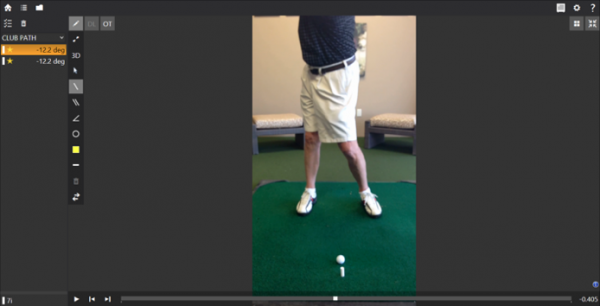
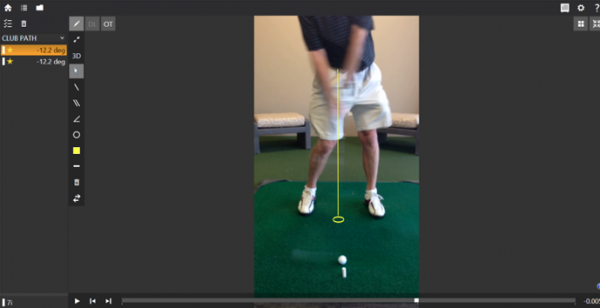
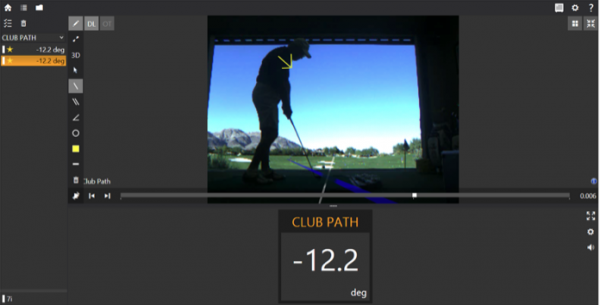
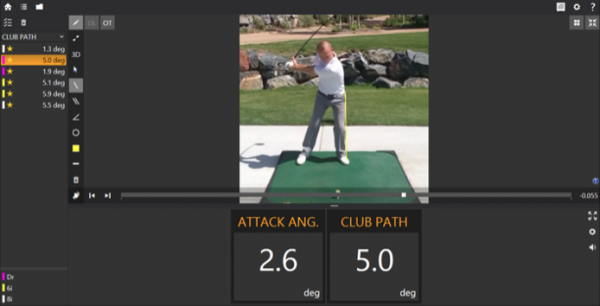
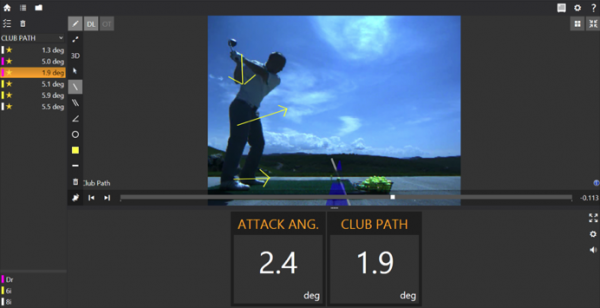


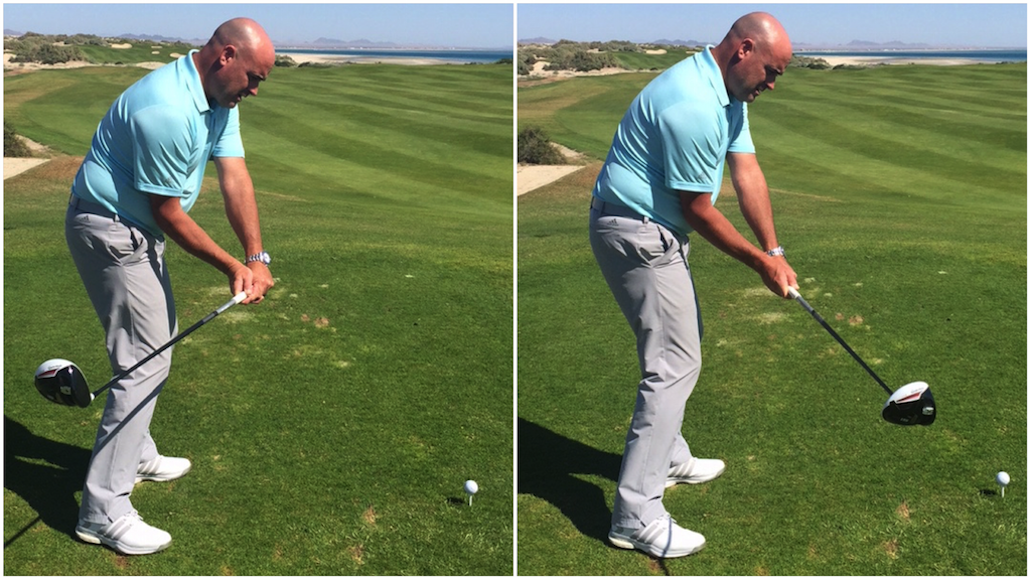












Bob Keane
Jul 25, 2015 at 7:53 pm
Transferring weight left is difficult if the weight gets to the outside of right foot. Nothing to push off. Sway, and then try not to “spin out” or come “over the top”, very difficult.
Ron
Jul 25, 2015 at 2:24 pm
As an engineer and physician, I COMMENT that most golf tips one sees seem to leave out the fact that in the DYNAMIC golf swing(backswing) enough momentum must be produced in the backswing for the lower body(legs and hips) to pull against on the downswing. If enough momentum is produced in the backswing it is much more difficult to overshift onto the left side, but this shift occurs naturally as the momentum of the club tries to hold the (coiled) body back. If one STARTS the backswing almost from the FINISH position, and allows the club swing back and load up the right side, then a very natural and instinctive weight shift occurs to the left side to initiate the downswing. I believe Jack N. has written that he wishes he could start the golf swing from the left side instead of from the static position at address. Unfortunately the ball is in the way! But this makes an excellent pre shot “swing” before hitting the shot and reminds one of the proper timing(synchronization) of the swing just before hitting the shot. I believe I see Jordan Spieth doing this as part of his preshot ritual.(?)
I suggest this ” swing” should done forcefully with the eyes closed(which produces great awareness of body movement and position), as if one actually meant to hit a shot. Then the shot must be hit within 8 seconds! Otherwise the “feel” will be lost. We humans cannot remember the “feel” any longer than 8 seconds.
Your mileage may vary
JMaron
Jul 23, 2015 at 10:54 am
Hi Tom,
Really enjoy your articles.
Worked on this last night and it really helped. I’m a decent golfer (1 handicap). My bad shots are mostly left hooks that start at the target or even left, and the odd shot a little fat. Not sure if this tip was meant to help those problems – but it sure seemed to help. The hook disappeared and I was really flushing it.
Walter Pendleton
Jul 22, 2015 at 3:47 pm
Elementary dear Watson…you are presuming the transfer of energy into the heel or hip or left side will somehow magically square the club face through impact. That my friend is called drinking the Kool-Aid i.e. what happens when you take your bump and post hypothesis to anything but the flat lies you practice religiously? Don’t know? Lets just say the S*% hits the fan because of timing changes, caused by variations in ball positions at address! I’d like to tell you the answer to solve your problem but then I’d have to kill you! FYI – Hogan was a great player…but he didn’t let the cat out of the bag through impact! He let us work that piece of the puzzle out, regarding face repetition, where he found it…on the range! ” If you didn’t bring it with you… you won’t find it out here!” – Ben Hogan
ca1879
Jul 22, 2015 at 2:51 pm
Thanks Tom. That’s the clearest explanation of the “bump”, and how much and when to bump, that I’ve come across yet.
Steve
Jul 22, 2015 at 2:38 pm
Damn, wish i posted this
shabby
Jul 22, 2015 at 1:20 pm
That’s a hack lesson-
Joe
Jul 22, 2015 at 9:32 am
I always worry about “bump” advice, because it can cause some to exaggerate a lateral shift of the hips, and when the lower body goes laterally left (right hander), the upper body has a tendency to hang back on the right and you have to start flipping to save shots or hit a lot of chunks. I understand you account for this by making sure the hip is “going to right field”, but that’s still more of a rotating move than a lateral one. I think the key with this “bump” teaching is to make sure your student doesn’t have some 70’s disco bump image in their mind. For me personally, “clearing” the left hip has been much more useful than “bumping” it.
Steve
Jul 21, 2015 at 8:38 am
This article could be more hurtful then helpful. Bump to far and back shoulder drops to far and you get pops up to the right. This is old news anyway, bump a stick, chair, stool, table. Better off thinking of putting your weight on front heal to start the downswing, the way Jack played. Has teaching runs it’s course? There is nothing new just reruns.
Jack
Jul 20, 2015 at 11:13 pm
I just keep the right knee flexed while rotating back. My legs are pretty stable until impact and follow through where the left knee will straighten to allow for the finish, and the weight is on the left leg. If I can’t go further that’s fine. Don’t need a super long backswing. Then make sure to utilize my core when I am initiating the downswing. A fast rotation of the body generates speed much easier than when I was concentrating on whacking it with my arms.
other paul
Jul 20, 2015 at 9:24 pm
I used to bump that far but it slowed me down a lot. I just rotate hard now and make sure my hips move properly. I was taught that putting weight on a foot doesn’t have to mean posting up on it but simply pushing on the forward leg to get the desired rotation. Many very rotational swingers have a lot of weight on their front foot half way through the downswing that still have their body in the center of their stance (Bubba Watson? I think…) I could be wrong as I am a new student of the golf swing but have played for a few years. I saw a young guy who had 90% of his weight on his front foot when his club was half way back to the ball but looked like he was 50/50.
CD
Jul 20, 2015 at 3:05 pm
A bit more detail would help, easy to get stuck if you overdo it, could shift the baseline way right and get ahead of it if your left shoulder doesn’t separate from your chin, and easy to overdo it. What’s a good shoulder move? Presumably people can only lack enough ‘down’, ‘out’ or forward with the right shoulder and vice versa with left as the pelvis moves laterally initially?